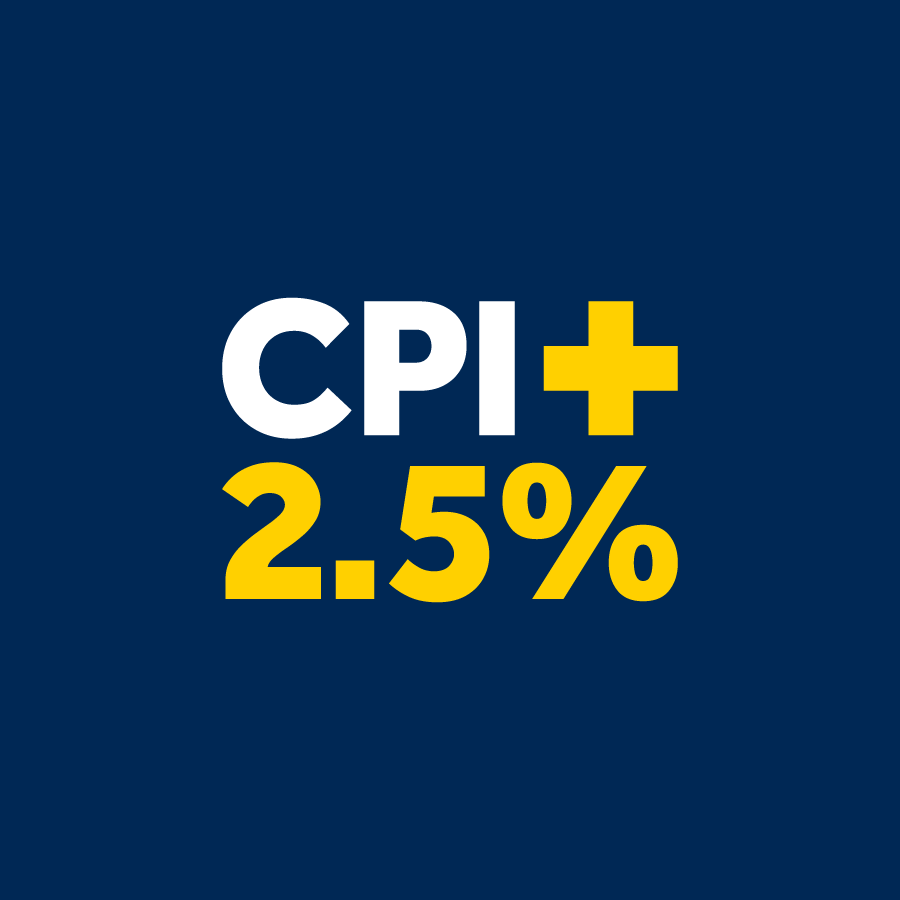Our products and services

We now help members invest in their health.
In partnership with our insurer MetLife, we're pleased to offer 360Health to all Hostplus members and their families.* It's a way to connect to a range of virtual health and wellbeing services at no extra cost.
*The term ‘family/families’ consists of a Hostplus member’s children, partner, parents, and parents in-law.
Learning Hub
Protecting Your Retirement: The Warning Signs of High-Risk Schemes
Following the collapse of the First Shield / Guardian schemes, Hostplus is urging members to familiarise themselves with the red flags to look out for when making decisions about your super. These include cold calling, pressure tactics, and exaggerated promises about high returns.
Manage your super

Hostplus Outstanding Value Super
8 years in a row
We’re proud to have won Canstar’s Outstanding Value Super Award for the eighth year in a row. The award recognises our strong long-term performance, competitive fees and an array of product features.
Retirement

Retirement ready. Tick.
The Epic Retirement Tick is a new recognition from Chant West for super funds that meet a high standard across key retirement criteria.
Hostplus is proud to be among the first of only six funds to earn the Tick - helping members feel confident about their retirement today and into the future.
Forms and resources
Protecting Your Retirement: The Warning Signs of High-Risk Schemes
Following the collapse of the First Shield / Guardian schemes, Hostplus is urging members to familiarise themselves with the red flags to look out for when making decisions about your super. These include cold calling, pressure tactics, and exaggerated promises about high returns.
-
Member Online
Enter your Member Number and Password to access your account anytime.
-
Pension Online
Log in to manage your Pension account 24 hours a day, 7 days a week.
-
QuickSuper
Pay your employees super contributions across multiple super funds.
-
Self-Managed Invest (SMI) for SMSF
Enter your Username and Password to access your account and start managing your investments.
-
Member Join
Everyone is welcome to join us as a member of our personal super plans.
-
Pension Join
Starting a Hostplus Pension or joining Hostplus if you’re not already a member is easy.
-
Employer Join
No fees. Easy payments. Become a registered Hostplus employer in less than 10 minutes.
-
SMI Join
It only takes a few minutes to register to invest with Hostplus Self-Managed Invest.
Why choose Hostplus

Hostplus Outstanding Value Super
8 years in a row
We’re proud to have won Canstar’s Outstanding Value Super Award for the eighth year in a row. The award recognises our strong long-term performance, competitive fees and an array of product features.
Your responsibilities

Hostplus Outstanding Value Super
8 years in a row
We’re proud to have won Canstar’s Outstanding Value Super Award for the eighth year in a row. The award recognises our strong long-term performance, competitive fees and an array of product features.
How to make payments
Tools and resources
News and Insights
-
Member Online
Enter your Member Number and Password to access your account anytime.
-
Pension Online
Log in to manage your Pension account 24 hours a day, 7 days a week.
-
QuickSuper
Pay your employees super contributions across multiple super funds.
-
Self-Managed Invest (SMI) for SMSF
Enter your Username and Password to access your account and start managing your investments.
-
Member Join
Everyone is welcome to join us as a member of our personal super plans.
-
Pension Join
Starting a Hostplus Pension or joining Hostplus if you’re not already a member is easy.
-
Employer Join
No fees. Easy payments. Become a registered Hostplus employer in less than 10 minutes.
-
SMI Join
It only takes a few minutes to register to invest with Hostplus Self-Managed Invest.
Why Hostplus

Retired and looking for more certainty over your returns?
Introducing CPIplus, a Pension investment option that aims to deliver a consistent and predetermined return above inflation each year.
Not available for Transition to Retirement Pensions. Though returns above inflation are predetermined annually, Hostplus can shorten the return period. Hostplus may also adjust the rate of return with at least 30 days’ notice.
Product and fee information for advisers

Retired and looking for more certainty over your returns?
Introducing CPIplus, a Pension investment option that aims to deliver a consistent and predetermined return above inflation each year.
Not available for Transition to Retirement Pensions. Though returns above inflation are predetermined annually, Hostplus can shorten the return period. Hostplus may also adjust the rate of return with at least 30 days’ notice.
News and insights
Investment options
Pricing and performance
News, resources & insights
-
Member Online
Enter your Member Number and Password to access your account anytime.
-
Pension Online
Log in to manage your Pension account 24 hours a day, 7 days a week.
-
QuickSuper
Pay your employees super contributions across multiple super funds.
-
Self-Managed Invest (SMI) for SMSF
Enter your Username and Password to access your account and start managing your investments.
-
Member Join
Everyone is welcome to join us as a member of our personal super plans.
-
Pension Join
Starting a Hostplus Pension or joining Hostplus if you’re not already a member is easy.
-
Employer Join
No fees. Easy payments. Become a registered Hostplus employer in less than 10 minutes.
-
SMI Join
It only takes a few minutes to register to invest with Hostplus Self-Managed Invest.
Our company
Careers
-
Member Online
Enter your Member Number and Password to access your account anytime.
-
Pension Online
Log in to manage your Pension account 24 hours a day, 7 days a week.
-
QuickSuper
Pay your employees super contributions across multiple super funds.
-
Self-Managed Invest (SMI) for SMSF
Enter your Username and Password to access your account and start managing your investments.
-
Member Join
Everyone is welcome to join us as a member of our personal super plans.
-
Pension Join
Starting a Hostplus Pension or joining Hostplus if you’re not already a member is easy.
-
Employer Join
No fees. Easy payments. Become a registered Hostplus employer in less than 10 minutes.
-
SMI Join
It only takes a few minutes to register to invest with Hostplus Self-Managed Invest.
-
Member Online
Enter your Member Number and Password to access your account anytime.
-
Pension Online
Log in to manage your Pension account 24 hours a day, 7 days a week.
-
QuickSuper
Pay your employees super contributions across multiple super funds.
-
Self-Managed Invest (SMI) for SMSF
Enter your Username and Password to access your account and start managing your investments.
-
Member Join
Everyone is welcome to join us as a member of our personal super plans.
-
Pension Join
Starting a Hostplus Pension or joining Hostplus if you’re not already a member is easy.
-
Employer Join
No fees. Easy payments. Become a registered Hostplus employer in less than 10 minutes.
-
SMI Join
It only takes a few minutes to register to invest with Hostplus Self-Managed Invest.
- Home
- Members
- Manage your super
- Grow and manage your super
- Voluntary contributions
- Spouse contributions
Spouse
contributions and splitting
Share the wealth by contributing to your spouse’s superannuation. As long as you both meet the eligibility criteria, you can grow both your super accounts and reduce your tax bill in one simple process.


Work as a team
Retire together
You’ve planned out your life in your head. You’ve both got individual goals. And you’ve got things you’d like to do as a couple. One of those is to build a secure financial future together. Super is a big part of that plan, which is why if your partner is a low-income earner, you can help build their super.
Want to know more about pensions and how to enjoy a robust retirement income?
The benefits of sharing
If you or your partner is a low-income earner or taking a break from work, the higher-wage earner may be eligible to make contributions to help build their spouse’s super savings.
Other benefits include:
- Spouse contributions are not taxed when they're received by your super fund as long as they don’t exceed the non-concessional contributions cap ($120,000 per year).
- The super contributor may be eligible for a tax rebate, provided the spouse’s total income is less than $40,000 and certain other eligibility criteria have been satisfied.1
Contribution caps apply. For more information refer to our How Super Works Guide for your product.
1. Including assessable income, total reportable fringe benefits amounts and reportable employer super contributions.


Building your nest egg together
Contribution splitting may allow you to split up to 85% of your concessional contributions with your spouse at the end of a financial year.2 Contribution caps apply.
For more information refer to our How Super Works Guide for your product.
2. Please note, minimum requirements, fees and charges apply. Please refer to the Product Disclosure Statement.
Make a spouse contribution
Get a tax break
If you make a contribution into your spouse’s super account you might be eligible for a tax benefit.
The maximum tax rebate is 18% of a $3,000 spouse contribution. That means you may be $540 better off.
The full tax rebate is available if your spouse’s income (including assessable income, total reportable fringe benefits amounts and reportable employer superannuation contributions) is less than $37,000 per year.
Tax offsets will not be available if the receiving spouse has exceeded their non-concessional contributions cap in the relevant financial year or they have a total super balance* equal to or exceeding the transfer balance cap as at 30 June before the start of the financial year in which the contribution was made.
*Your total superannuation balance is the total value of your accumulation and retirement phase interests (including rollover amounts not yet included in those interests) across all of your superannuation accounts, reduced by the sum of any structured settlement contributions.


Get the most out of the tax rebate
The tax rebate offered to you if you contribute to your spouse’s super reduces by $1 for every dollar over $37,000 of your spouse’s income.3
The rebate reduces to zero when your spouse’s income reaches $40,000 (or over).
3. Including assessable income, total reportable fringe benefits amounts and reportable employer super contributions.
Learn about contribution splitting
At Hostplus we believe in supporting our members in every way we can. That’s why we offer contribution splitting.
Contribution splitting can help you secure the financial future of your spouse. You can split up to 85% of your concessional contributions (employer SG contributions, salary sacrifice and deductible contributions made by the self-employed) with your spouse at the end of a financial year.4
4. Please note, minimum requirements, fees and charges apply. Please refer to the Product Disclosure Statement.

